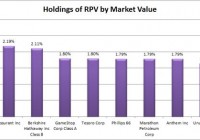June 2015 U.S. Fund Flows Summary
Volatility was on the rise in June. At the beginning of the month rate-hike worries plagued many investors after an upbeat jobs report raised the possibility of an interest rate hike this fall. The Labor Department reported that the U.S. economy had added a better-than-expected 280,000 jobs for May. Despite a rise in the unemployment rate to 5.5%, many pundits felt the Federal Reserve would be more likely to raise interest rates sooner rather than later. However, European equities showed signs of weakness, and investor handwringing began in earnest as investors contemplated the looming deadline for Greece to make its first debt payment to the IMF at the end of June. And while early in the month the Shanghai Composite rose above the 5,000 mark to its highest level since January 2008, on Friday, June 19, the Shanghai Composite posted its worst week in more than seven years as investors bailed on some recently strong-performing Chinese start-ups. Worries of high valuations and record levels of margin debt sparked the exodus. Investors’ trepidations were not easily dispelled, and by mid-month more talk about a Greek exit (“Grexit”) from the Eurozone and anxiety before the Federal Open Market Committee’s June meeting led to further selloffs in the equity markets. For June the Dow Jones Industrial Average, the S&P 500, and the NASDAQ were in the red, losing 2.17%, 2.10%, and 1.64%, respectively, while a strong small-caps rally helped send the Russell 2000 up 0.59%. For the second consecutive month investors were net purchasers of fund assets, injecting $8.9 billion into the conventional funds business (excluding ETFs) for June. For the second month in a row money market funds-taking in some $8.7 billion for June-witnessed the largest net inflows of the three broad asset classes. Stock & mixed-asset funds took in $7.7 billion for the month. And, for the first month in six mutual fund investors were net sellers of fixed income funds, redeeming $7.5 billion from the macro-group for June. Despite hitting multiple record highs and triple-digit lows in June, the markets were generally in a sideways pattern for the month. While the Russell 2000 and the NASDAQ Composite managed to break into record territory in mid-June, advances to new highs were generally just at the margin. However, at June month-end concerns about the Greek debt drama, looming U.S. interest rate increases, Puerto Rico’s inability to service its public debt, and China’s recent market gyrations weighed heavily on investors. U.S. stocks took a drubbing in the last week of the month as investors dumped risky assets after negotiations between Greece and its creditors collapsed. The Dow witnessed its largest one-day point loss in more than two years on June 29. A positive finish for equities on the last trading day of June wasn’t enough to offset the Greek debt-inspired meltdown from the prior day, and many of the major indices witnessed their first quarterly loss in ten, with the Dow and the S&P 500 losing 0.88% and 0.23%, respectively, for Q2 2015, while the NASDAQ Composite gained 1.75%. For June the dollar lost ground against the pound (-2.84%), the euro (-1.47%), and the yen (-1.47%). Commodities prices also declined, with near-month gold prices dropping 1.54% to close June at $1,171.50/ounce. Front-month crude oil prices declined 1.38% to close the month at $59.47/barrel. Despite the rise in volatility toward month-end, the ETF universe witnessed its fifth consecutive month of net inflows, taking in some $17.6 billion for June. For the fourth month running authorized participants (APs) were net purchasers of equity ETFs, injecting $19.7 billion; however, for the second consecutive month APs were net redeemers of bond ETFs-removing $2.1 billion for June. Shrugging off the on-again, off-again nature of the Greek debt drama, the volatile Chinese market, and a resurgence of news surrounding the possible default by Puerto Rico of its sovereign debt, for the fifth month in a row APs’ appetite for World Equity ETFs remained high. The macro-classification witnessed the strongest inflows (+$9.6 billion) of Lipper’s five equity-related macro-classifications, followed at a distance by U.S. Diversified Equity ETFs (+$5.8 billion), Sector Equity ETFs (+$4.3 billion), and Mixed-Asset ETFs, which attracted some $105 million for the month. The Alternatives ETFs macro-classification (-$146 million) suffered the only net outflows for the month.
